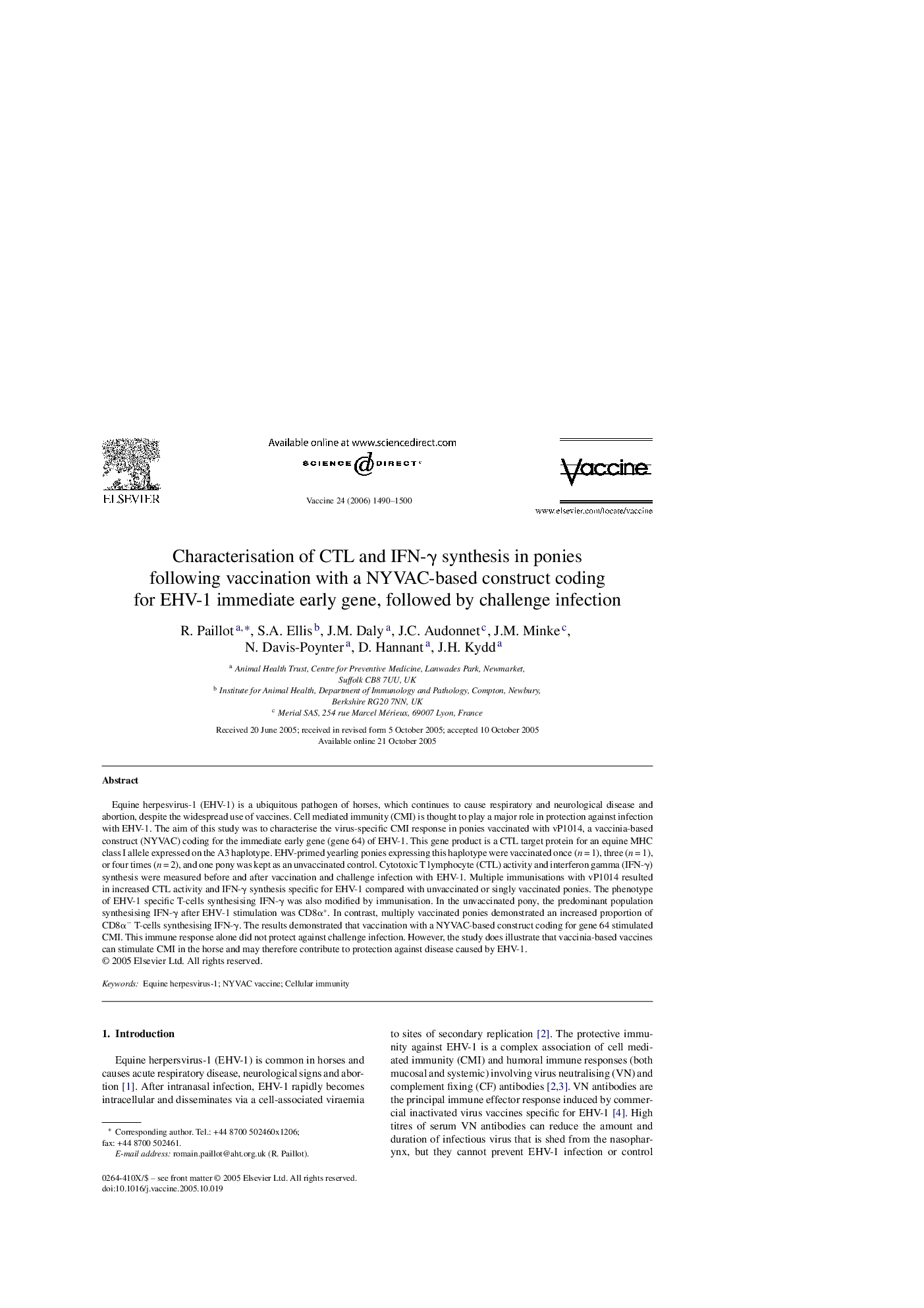| کد مقاله | کد نشریه | سال انتشار | مقاله انگلیسی | نسخه تمام متن |
|---|---|---|---|---|
| 2407856 | 1103145 | 2006 | 11 صفحه PDF | دانلود رایگان |
عنوان انگلیسی مقاله ISI
Characterisation of CTL and IFN-γ synthesis in ponies following vaccination with a NYVAC-based construct coding for EHV-1 immediate early gene, followed by challenge infection
دانلود مقاله + سفارش ترجمه
دانلود مقاله ISI انگلیسی
رایگان برای ایرانیان
موضوعات مرتبط
علوم زیستی و بیوفناوری
ایمنی شناسی و میکروب شناسی
ایمونولوژی
پیش نمایش صفحه اول مقاله

چکیده انگلیسی
Equine herpesvirus-1 (EHV-1) is a ubiquitous pathogen of horses, which continues to cause respiratory and neurological disease and abortion, despite the widespread use of vaccines. Cell mediated immunity (CMI) is thought to play a major role in protection against infection with EHV-1. The aim of this study was to characterise the virus-specific CMI response in ponies vaccinated with vP1014, a vaccinia-based construct (NYVAC) coding for the immediate early gene (gene 64) of EHV-1. This gene product is a CTL target protein for an equine MHC class I allele expressed on the A3 haplotype. EHV-primed yearling ponies expressing this haplotype were vaccinated once (n = 1), three (n = 1), or four times (n = 2), and one pony was kept as an unvaccinated control. Cytotoxic T lymphocyte (CTL) activity and interferon gamma (IFN-γ) synthesis were measured before and after vaccination and challenge infection with EHV-1. Multiple immunisations with vP1014 resulted in increased CTL activity and IFN-γ synthesis specific for EHV-1 compared with unvaccinated or singly vaccinated ponies. The phenotype of EHV-1 specific T-cells synthesising IFN-γ was also modified by immunisation. In the unvaccinated pony, the predominant population synthesising IFN-γ after EHV-1 stimulation was CD8α+. In contrast, multiply vaccinated ponies demonstrated an increased proportion of CD8αâ T-cells synthesising IFN-γ. The results demonstrated that vaccination with a NYVAC-based construct coding for gene 64 stimulated CMI. This immune response alone did not protect against challenge infection. However, the study does illustrate that vaccinia-based vaccines can stimulate CMI in the horse and may therefore contribute to protection against disease caused by EHV-1.
ناشر
Database: Elsevier - ScienceDirect (ساینس دایرکت)
Journal: Vaccine - Volume 24, Issue 10, 6 March 2006, Pages 1490-1500
Journal: Vaccine - Volume 24, Issue 10, 6 March 2006, Pages 1490-1500
نویسندگان
R. Paillot, S.A. Ellis, J.M. Daly, J.C. Audonnet, J.M. Minke, N. Davis-Poynter, D. Hannant, J.H. Kydd,